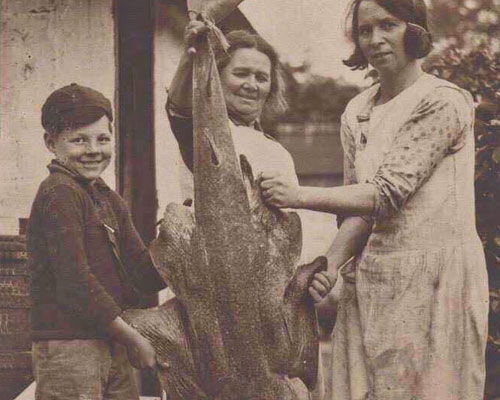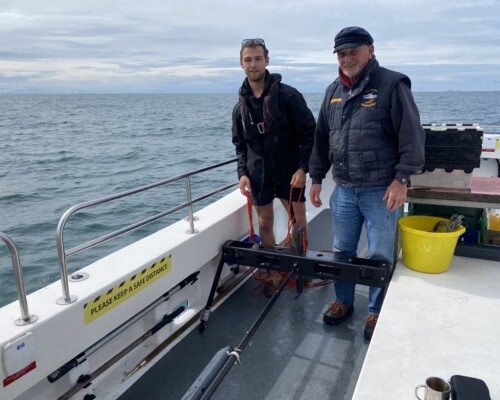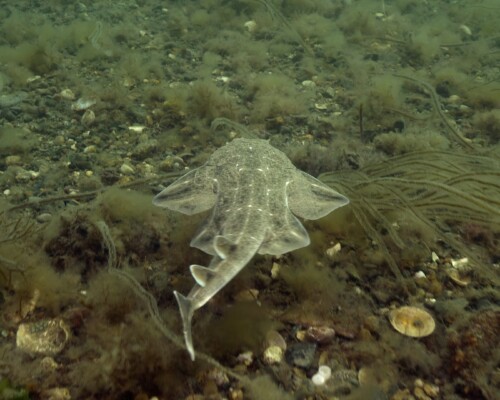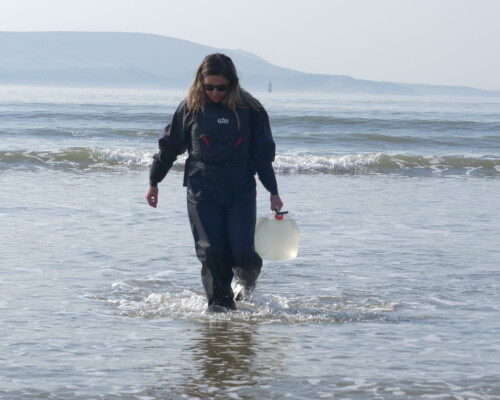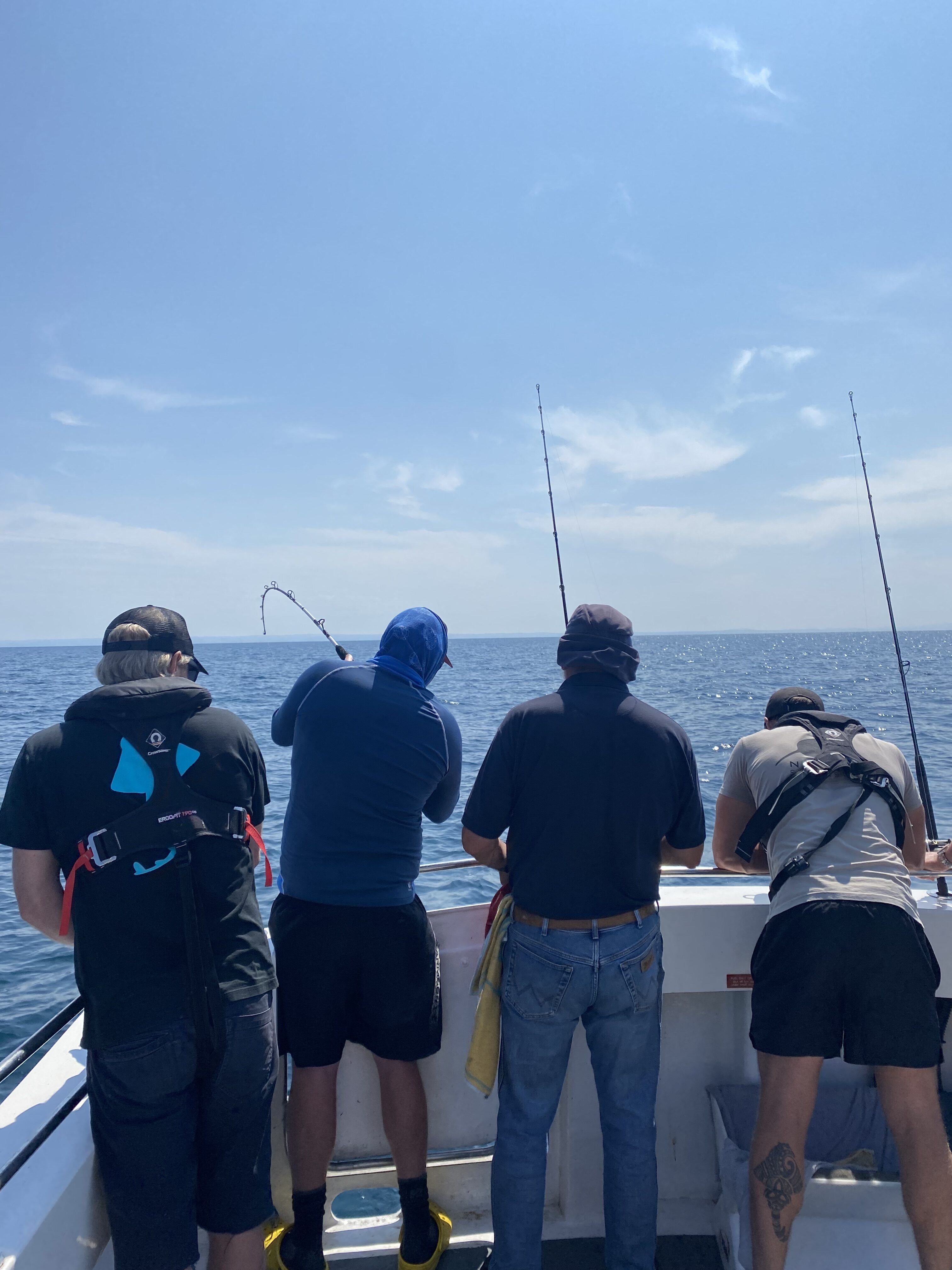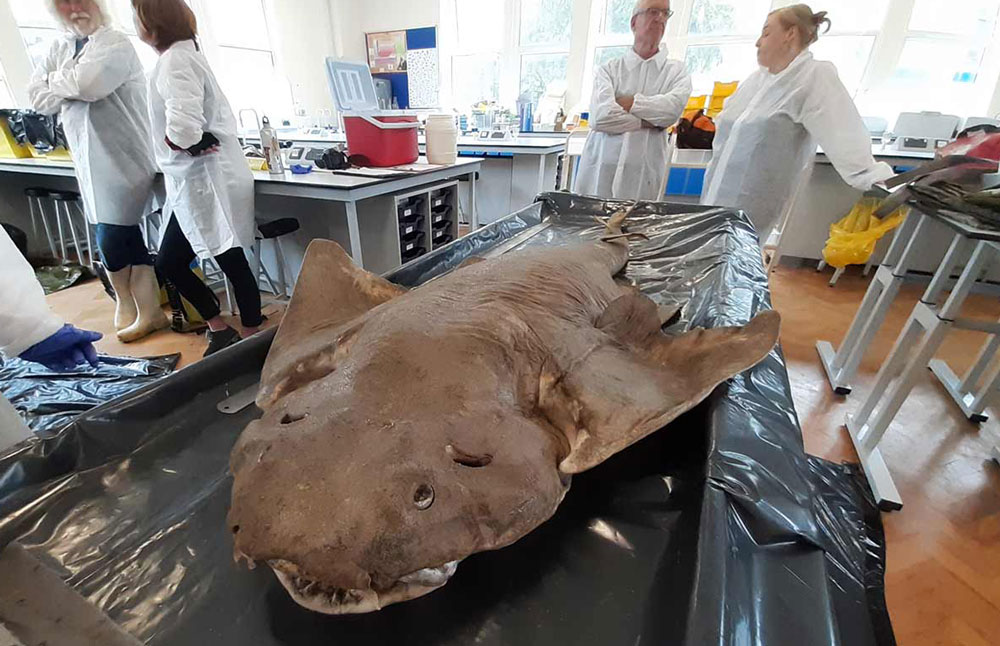Little is known about most of the biology and ecology of 27 elasmobranch species present in Welsh waters. There has been progress in understanding commercially targeted species, but the other 18 species are extremely data-limited, including 10 of which are listed on the Section 7 species list of the Environment (Wales) Act 2016.
Without data on distribution, abundance, seasonality, life-history traits, and associated habitats, it is challenging to safeguard these species.
Tope Tracking
Working together with local fishers, Project SIARC has started a new research project to understand more about the movements of endangered Tope in the Pen Llŷn a’r Sarnau Special Area of Conservation (PLAS SAC). We have deployed a new network of scientific moorings+ in PLAS SAC which will record the movements of 30 tope, implanted with acoustic tags, over the course of the next 12-18 months. The aim of this research is to provide insights into the main areas and habitats that tope use within the SAC.
The tagging has been designed to ensure minimal impact to the shark and is completed by a trained scientist under license*.
You can find more information in the Frequently Asked Questions section below, but if you have any other questions or concerns, please email us at siarc@zsl.org
+ Moorings were deployed with permission from Natural Resources Wales and under license from The Crown Estate.
* The tagging procedure is conducted by a competent, authorised and licenced person under an Animals (Scientific Procedure) Act Project Licence, authorised by the Home Office.
We need your help to aid with the research:
Have you caught a tope? Please check for the presence of an ID tag and report the number to siarc@zsl.org along with the date, time, and location (Latitude/Longitude) you caught the tope.
If it is safe to do so, please take a photo of the acoustic tagging site so we can check healing of sharks after tagging.
Please follow Best practice guidance to safely handle and release the shark and, if possible, avoid boarding.
Frequently Asked Questions
Where are the tags found?
The acoustic tag is surgically inserted inside the body cavity of the tope. Placement inside the body cavity ensures the tag is not lost and prevents biofouling (growth of algae and small animals) which can occur when tags are attached to the shark externally. A small red visual ID tag is found externally underneath the dorsal fin, which allows fishers to identify if they have caught a tagged tope.
What is an acoustic tag and how do they work?
The acoustic tag implanted in each tope transmits a unique sound pulse every 3 minutes. These sound pulses are ‘heard’ by sensors on the scientific moorings when the tope is within range (~500 m) which then record the ID of the individual. By deploying a network of 20 moorings within PLAS SAC we can then track the movements of each tope based on the timings of the detections by each sensor.
How long will the moorings be in the water for?
The scientific moorings will remain in place for 1 year before being recovered to download data from the sensors. Fifteen of the sensors are on moorings marked by a surface buoy while 5 sensors are found on moorings on the seabed in depths > 20 m. Locations of each sensor are marked on the below chart.
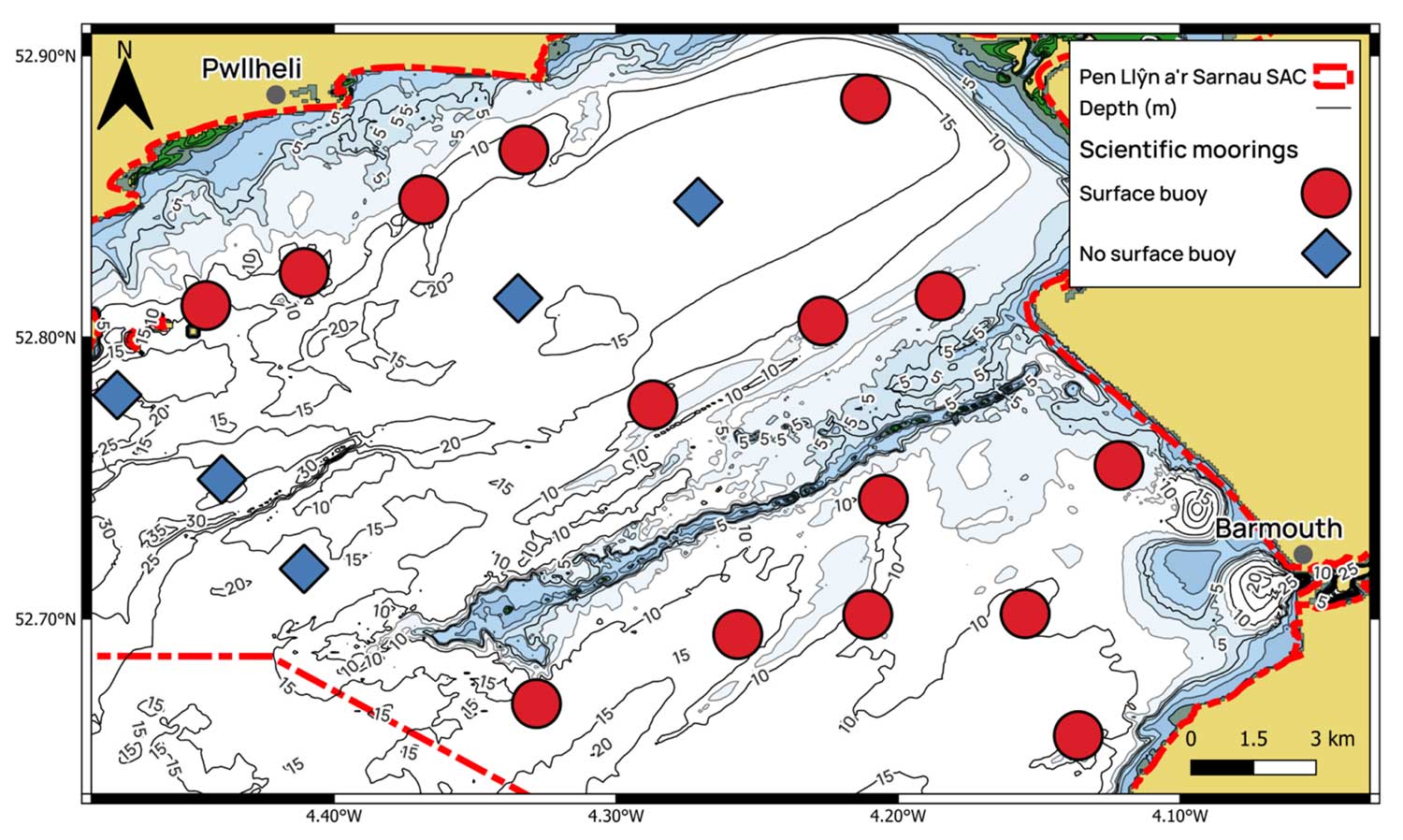

Bottom mooring with no surface buoy

Tracking receiver

Surface buoys are marked “Project SIARC Research”
How long does it take to tag a shark?
The capture and tagging process typically takes no more than 15 minutes from the time that the tope is hooked to the time that it is released. During this process tope spend no more than 10 minutes out of the water, during which a pump is used to provide water flow over the sharks’ gills to provide them with oxygen.
Does tagging harm the shark?
When tope are caught, they are placed on their back into a custom-built tagging cradle which puts them into a relaxed hypnosis like state known as ‘tonic immobility’. This keeps the shark immobilised ensuring the safety of the animal and research team during tagging. A small incision is then made by a trained scientist into the body cavity of the shark where the sterile acoustic tag is inserted. A painkiller is applied to the site of the incision to minimise discomfort during tagging. The incision is then closed using a couple of stitches which dissolve after ~1 week. Sharks have particularly good healing abilities, and this method of tagging is used around the world with no impacts on the health or behaviour of sharks. Once the tags battery runs out the inert tag will remain in the body of the shark for the rest of its life (in some areas tagged sharks have been recaught for over 13 years!).
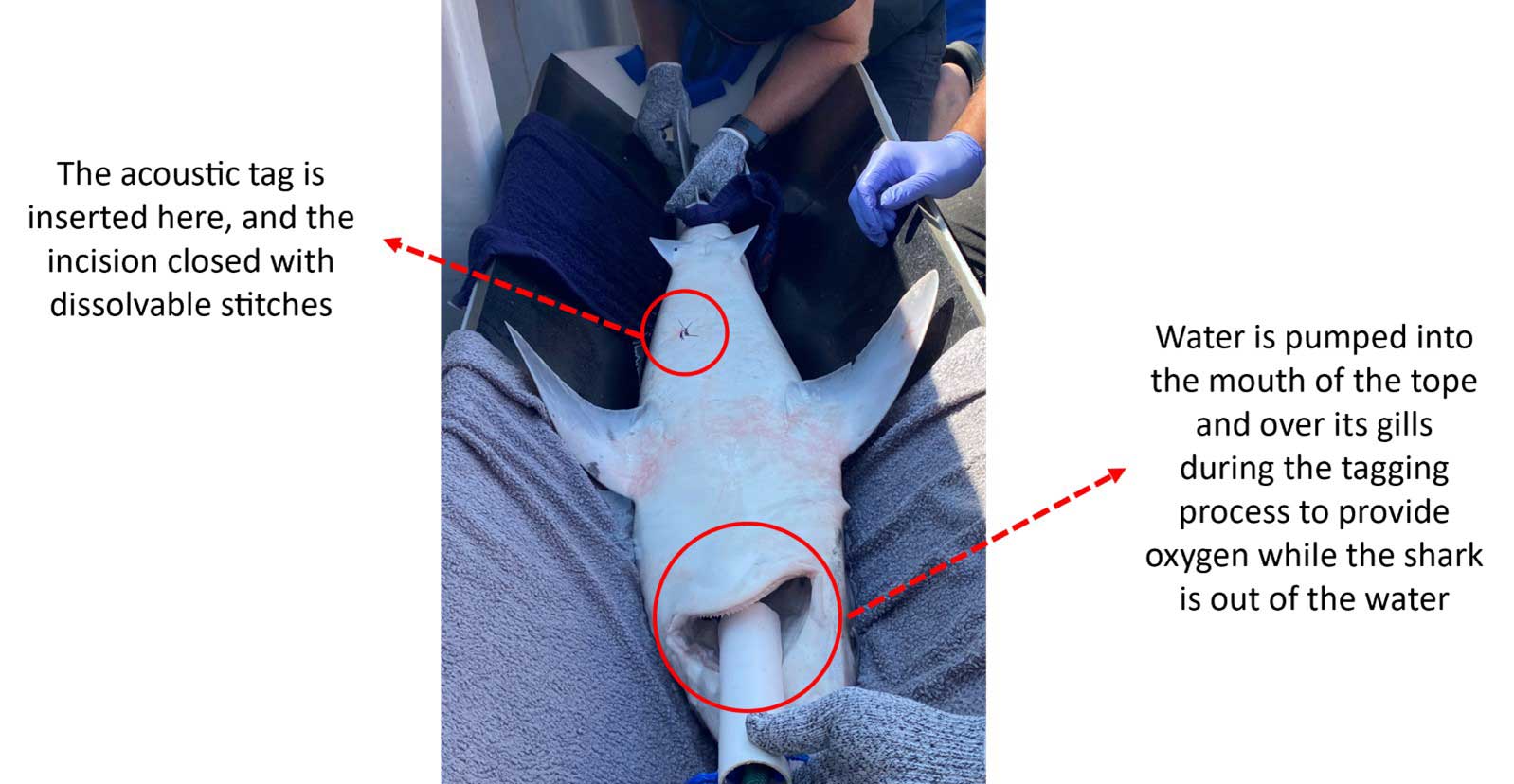
Can I help with tope tagging?
If you are a charter skipper working near to PLAS SAC and would be interested in working with us for future tope tagging, we would love to hear from you! Please contact us at siarc@zsl.org to discuss this possibility. Unfortunately, due to our licence for tagging work we are unable to work directly with recreational anglers independently of charter vessels.
When will I find out about the results of the research?
Scientific moorings will be recovered and data from sensors downloaded in Summer 2025. The data will then be analysed, and open meetings will be held in Pwllheli and Aberdyfi in Winter 2025 to present results of the research to local fishers, communities, and water users.
Dissection events
In collaboration with the Cetacean Strandings Investigation Programme (CSIP), Aberystwyth School of Veterinary Science (ASVS) and University College Dublin Veterinary Hospital (UCDVH), Project SIARC were able to conduct two sets of #CSIofTheSea examinations of five Angelsharks, in both Wales and Ireland, to gather vital biological information on these Critically Endangered species.
Although it is extremely rare, strandings of dead Angelsharks can occur around the coast. Post-mortem examination and analysis of samples generates vital data related to the cause of death, health of the individual (including disease and contamination), diet, reproductive patterns, population structure, as well as connectivity to other populations across the East Atlantic and Mediterranean Sea.
The dissection events provided an incredible opportunity to both strengthen and expand current collaborations in Wales and Ireland, and highlighted the vast number of organisations working towards the conservation of Angelsharks and other shark species across the Celtic Seas Ecoregion. Together, we hope to build the capacity for collaborative elasmobranch conservation across the region.
Check out our new blog to find out more about the #CSIofTheSea examinations, and watch our video below, to find out more about the work happening in Ireland.
Research group
One of the Project SIARC aims is to enable new partnerships and collaborative research by bringing together elasmobranch scientists and NGOs across the Celtic Seas Ecoregion. To do this, we are developing a Project SIARC Research Group, to meet quarterly, to share recent findings, expertise, experience and current research between organisations.
Let's talk
If you’re a researcher or organisation working on elasmobranchs across the Celtic Seas Ecoregion, get in touch with us to find out more.
siarc@zsl.org
